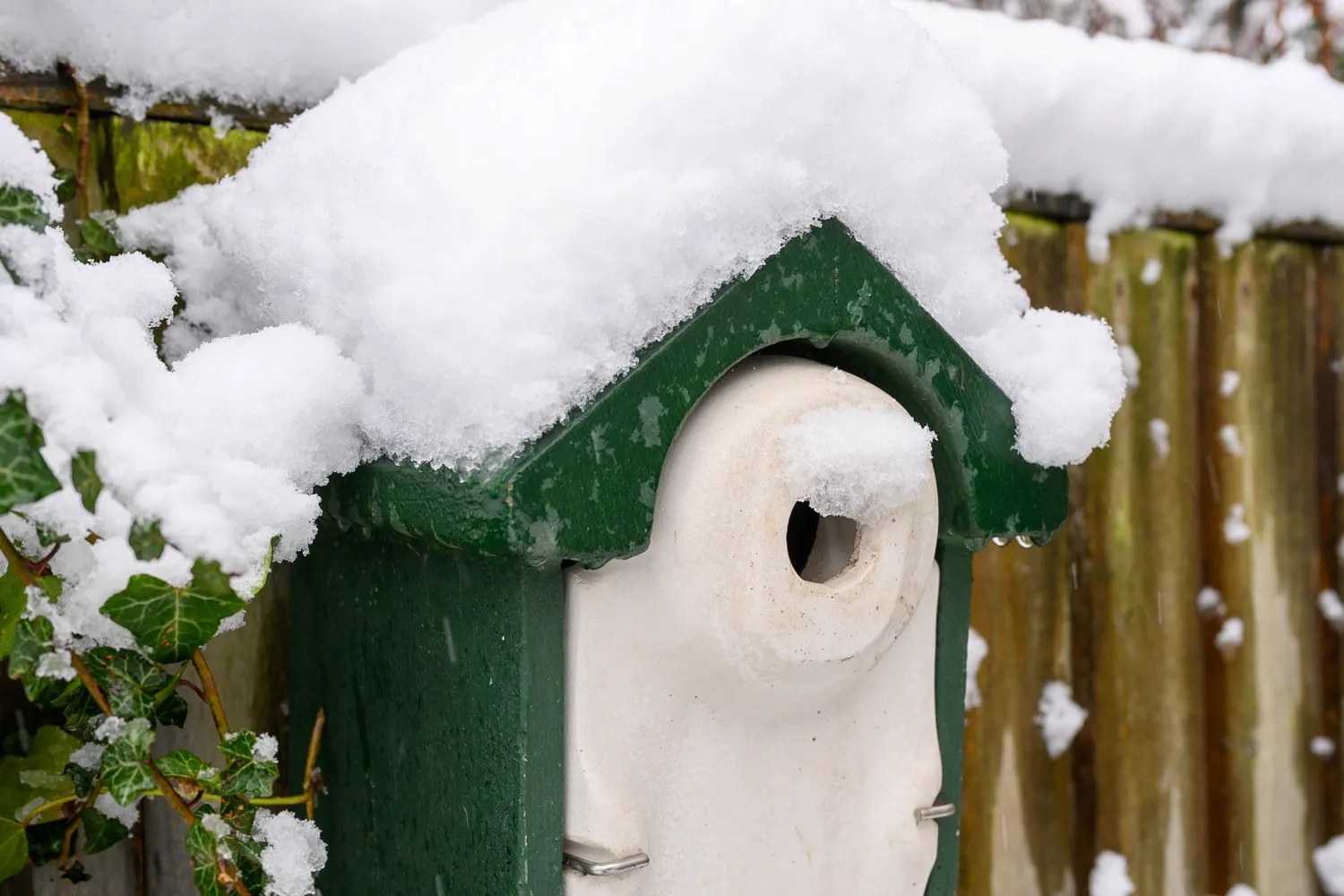The long winter nights can be perilous for small birds, whose large surface area to volume ratio means that they loose heat more easily than larger species. Small birds are also at risk from predators during the day and so can ill-afford to carry large food reserves as they approach the long, cold night.
Small birds reduce their nocturnal energetic expenditure by fluffing out their feathers to trap air and by huddling together. Cavities are a great place for many species to congregate and, with some 4.7 million nest boxes in UK gardens, householders have created a huge network of cosy garden bedrooms.
How important are these nest boxes to roosting birds? Towns and cities are warmer than the wider countryside so garden nest boxes could be the ideal place for small birds to get some kip.
Methods
Winter 2010/11, which included the coldest December in a century, was dramatic with plenty of snow and ice. Many birds responded as expected, flooding into gardens to feed – and also to sleep. Participants used a combination of direct observation, nest cameras, and dropping searches to identify occupancy and likely occupants.
Results
Over 400 people took part in the survey, with around a quarter searching for droppings, over a third using nest box cameras, and more than half making direct observations of birds flying to or from a roosting site. Each of these approaches revealed subtly different and valuable results. The diversity of birds that roosted in gardens was impressive, with 12 species detected through the survey.
Some intriguing differences in the roosting patterns of different species have emerged through the survey. Clearly, some species, such as Blue and Great Tits, are fairly antisocial sleepers, with most individuals roosting alone. Others, however, are much more likely to bed down in groups, with House Sparrows and, in particular, Wrens often roosting in large numbers. Indeed, Wrens were the real superstars of the survey, with a maximum count of 51 individuals found roosting together near Lyme Regis, Dorset.
Dropping searches
Who would guess that poo could tell us so much? Coupled with some simple observations of nest boxes or roosting pouches, over 100 people were able to reveal the presence or apparent absence of roosting birds using this simple method. Over 80 nest boxes were examined, with half of roosting birds being Blue Tits, and the next most frequently identified species being Great Tits. Only 24 survey participants looked for droppings in roosting pouches. However, these simple checks, coupled with some on-the-ground observations, revealed substantial differences compared with nest boxes. Over half of the roosting pouches examined were unused by roosting birds, while a third were occupied by Wrens – a much larger proportion than found in nest boxes. Unlike nest boxes, no Blue Tits were identified, the only other species being a Dunnock.
Nest cameras
Nest box camera observations produced similar findings to the droppings method. The most frequently seen bird roosting in camera-nest boxes was the Blue Tit, accounting for almost two-thirds of records, with the Great Tit accounting for nearly a quarter. An absence of roosting birds was the next most frequent record, registering 5% of observations.
The camera approach was beneficial, however, in that numbers of roosting birds could be examined. Blue and Great Tits almost invariably slept alone, averaging 1.2 and 1.0 individuals per box each night, respectively. Sample sizes of other species were relatively small, so broader conclusions about how many of these normally roost together are difficult to make. However, again, Wrens topped the list with numbers scrumming down for the night reaching double figures.
Direct observations
Direct observations at dusk and/or dawn were made of nest boxes, roosting pouches and other cavities. Nest boxes were, again, primarily the domain of Blue Tits, with more than half of observers recording this species – tallying well with the droppings and nest box camera results. Great Tits and Wrens each occupied just over an eighth of nest boxes, with other, less frequent, visitors including Nuthatch, Starling and Tree Sparrow.
Interestingly, patterns in occupancy of roosting pouches and other cavities contrasted sharply with nest boxes. Some 60 roosting pouches were observed, but three out of four were not used, and only Wren used these pouches widely, accounting for 20% of records. Other cavities were different again, housing a wider range of species than either nest boxes or roosting pouches, and a more even ratio of Blue Tits to Wrens – the former accounting for a fifth of records, the latter a quarter. House Sparrows also featured much more prominently in other cavities compared with nest boxes and roosting pouches, representing 10% of records.
Perhaps the most interesting patterns, however, relate to the numbers of each species seen in different roosting sites. The average number of Wrens seen roosting together rose from 6.8 individuals in roosting pouches, to 10.4 individuals in nest boxes, to 17.4 individuals in other cavities. Similarly, the average number of Blue Tits and House Sparrows seen roosting with others of their kind increased from 1.5 and 3.5 individuals in nest boxes, to 2.3 and 6.1 individuals in other cavities, respectively. Therefore, it seems as though other cavities – which may be more variable and sometimes larger in size than nest boxes or roosting pouches, might support the greatest variety and numbers of roosting birds in our gardens during winter.
Outputs and outcomes
Gardens support a large number of roosting birds during winter. It is possible that these roosting opportunities are vital in helping some individuals to survive cold winter nights.
